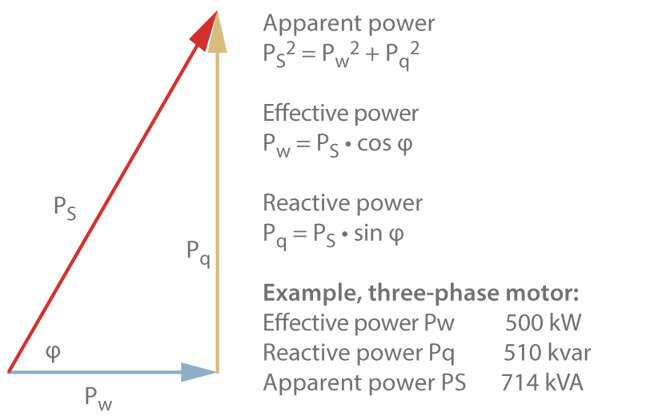Electrical power
Electrical power (P) is the product of voltage and amperage (active current). The unit is watts (W).
Electrical power can be defined with respect to alternating and three-phase current whereby a distinction is made between the output types apparent power, effective power and reactive power (also see Power).
Electrical power is supplied to the consumer by the power company. Many electrical consumers, such as alternating-current and three-phase motors, require effective (PW) and reactive power (Pq). Whereas effective power is converted into mechanical power, reactive power is used to build and dissipate the magnetic fields. It fluctuates periodically between generator and load. The intensity of this energy over time is quantified by the reactive power.
Power companies must also provide apparent power (PS), since only active current Iw = I · cos(φ) may be used to calculate power if a phase shift between current and voltage occurs about angle φ in AC circuits. This current is in phase with the voltage, and the current component shifted by 90 degrees with respect to the voltage is the reactive current (Iq = I · sin(φ)). The product of voltage (U) and (apparent) current (I) is apparent power (PS).
Definitions:
Effective power Pw=U · I · cos(φ)
Reactive power Pq=U · I · sin(φ)
Apparent power Ps=U · I
Ps2=Pw2 + Pq2
Reactive power Pq=U · I · sin(φ)
Apparent power Ps=U · I
Ps2=Pw2 + Pq2
Apparent power is typically specified not in watts (W), but in volt-amperes (VA), and reactive power in volt-ampere reactives (var).

Fig. 1 Electrical power: Correlation between reactive power, effective power and apparent power
